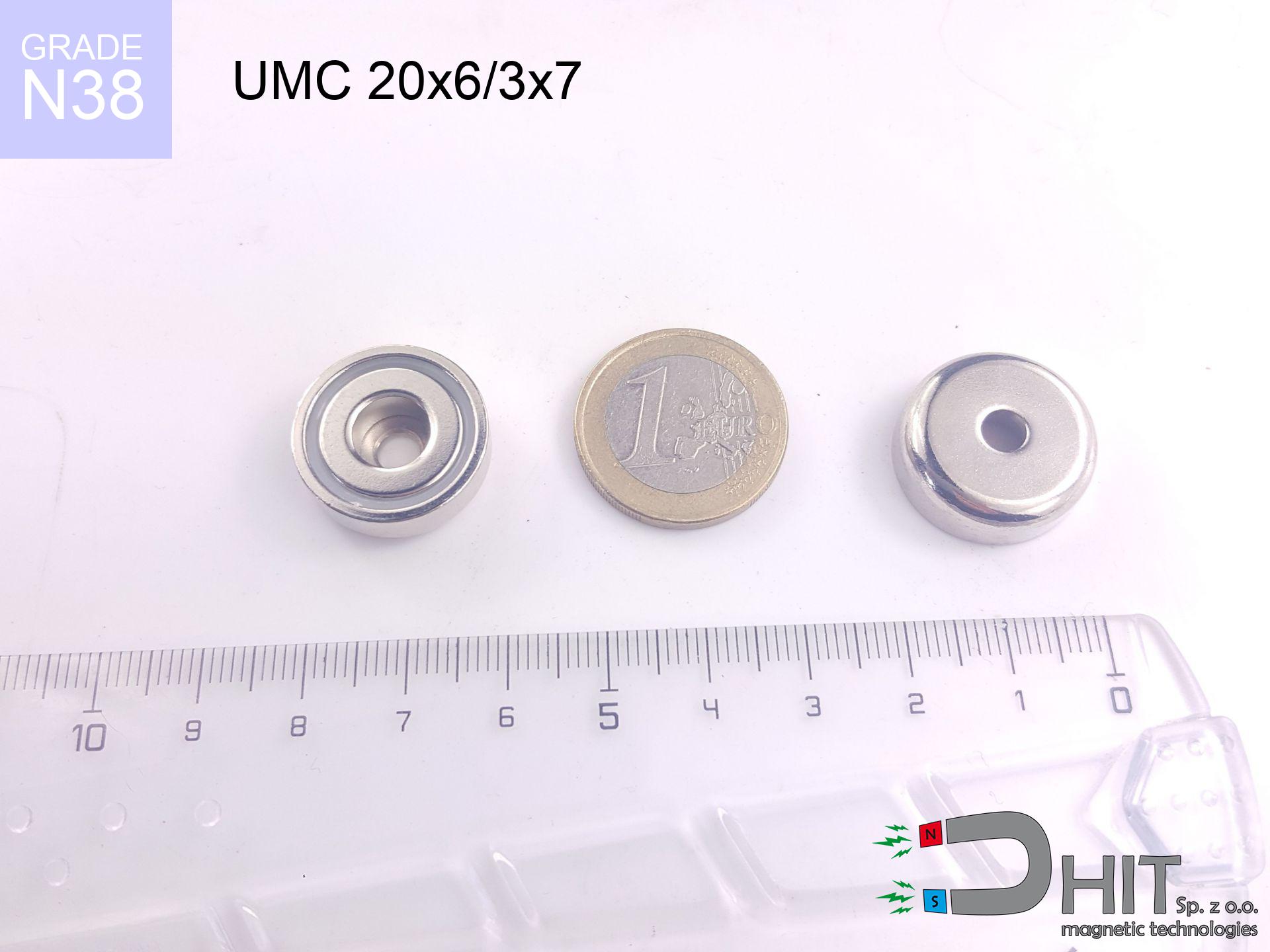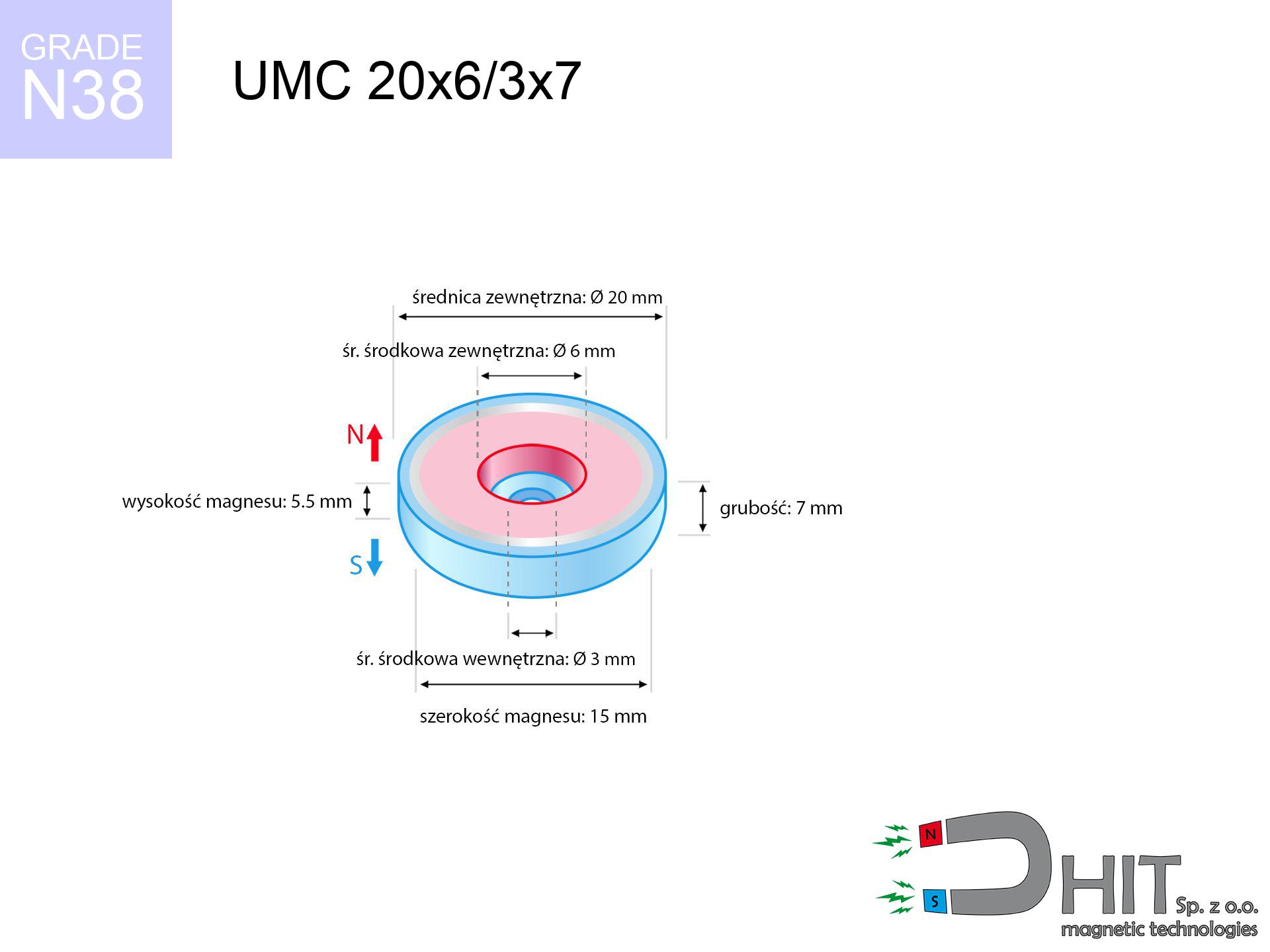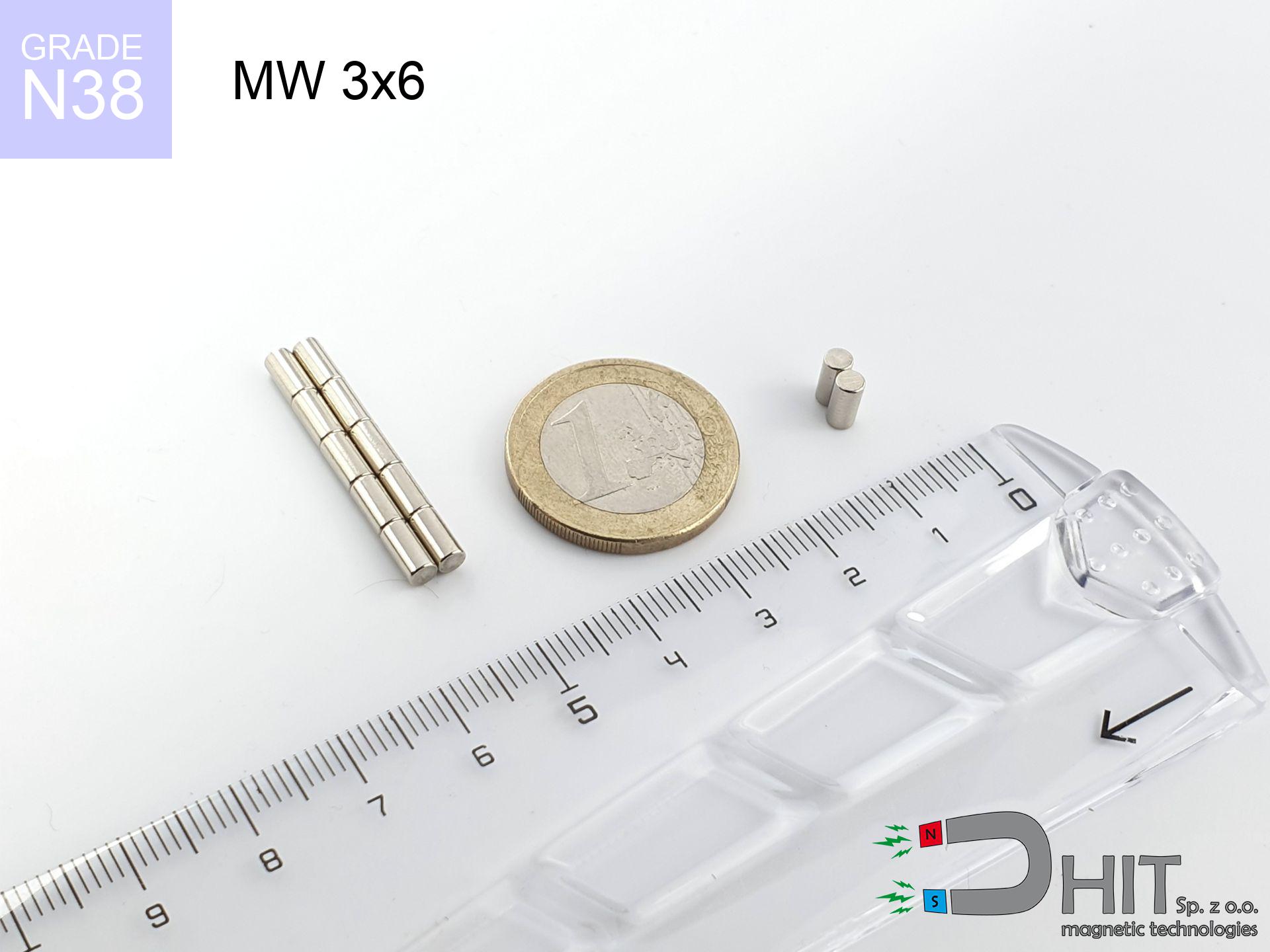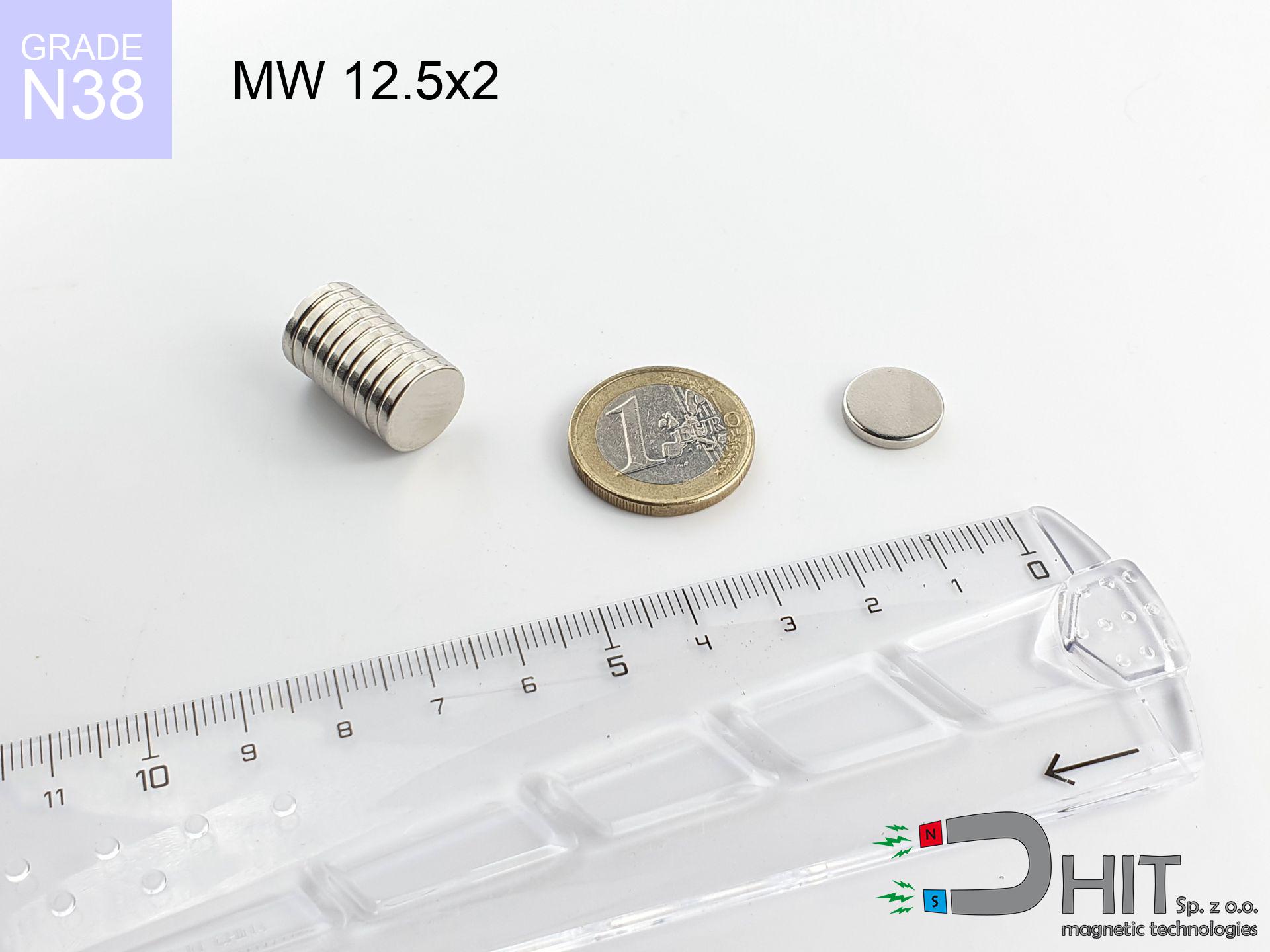UMC 20x6/3x7 / N38
cylindrical magnetic holder
catalog number 320407
GTIN: 5906301814634
external diameter Ø
20
mm [±0,1 mm]
internal diameter Ø
6/3
mm [±0,1 mm]
height
7
mm [±0,1 mm]
capacity ~
6.00 kg / 58.84 N
max. temperature
≤ 80
°C
catalog number 320407
GTIN: 5906301814634
external diameter Ø
20 mm [±0,1 mm]
internal diameter Ø
6/3 mm [±0,1 mm]
height
7 mm [±0,1 mm]
capacity ~
6.00 kg / 58.84 N
max. temperature
≤ 80 °C
6.99 ZŁ gross price (including VAT) / pcs +
5.68 ZŁ net price + 23% VAT / pcs
bulk discounts:
need more quantity?Do you have questions?
Give us a call tel: +48 888 99 98 98 or get in touch via contact form on our website. You can check the mass as well as the shape of neodymium magnets in our power calculator magnetic mass calculator
Orders placed by 2:00 PM will be shipped on the same business day.
Specification: cylindrical magnetic holder 20x6/3x7 / N38
Magnetic properties of the material N38
Physical properties of sintered neodymium magnets Nd2Fe14B
Recommended articles for purchase
Advantages and disadvantages of neodymium magnets NdFeB.
In addition to immense strength, neodymium magnets have the following advantages:
- They do not lose strength over time. After about 10 years, their power decreases by only ~1% (theoretically),
- They protect against demagnetization caused by external magnetic sources very well,
- In other words, thanks to the glossy nickel, gold, or silver finish, the element gains an visually attractive appearance,
- They exhibit extremely high magnetic induction on the surface of the magnet,
- Thanks to their high temperature resistance, they can operate (depending on the shape) even at temperatures up to 230°C and above...
- The ability for precise shaping and customization to specific needs – neodymium magnets can be produced in many variants of shapes and sizes, which enhances their versatility in applications.
- Significant importance in the industry of new technologies – find application in computer drives, electric motors, medical apparatus and other advanced devices.
Disadvantages of neodymium magnets:
- They are prone to breaking as they are extremely fragile when subjected to a strong impact. If the magnets are exposed to impacts, it is suggested using magnets in a metal holder. The steel housing in the form of a holder protects the magnet from impacts and also increases its overall strength,
- They lose strength at high temperatures. Most neodymium magnets experience permanent loss of strength when heated above 80°C (depending on the shape and height). However, we also offer special magnets with high temperature resistance, up to 230°C,
- Magnets exposed to a humid environment can corrode. Therefore, when using them outdoors, we suggest using waterproof magnets made of rubber, plastic, or other moisture-resistant materials,
- The use of a cover or a magnetic holder is recommended due to the limited possibilities of manufacturing threads or complex shapes in the magnet
- Possible danger associated with microscopic parts of magnets can be dangerous, if swallowed, which is crucial in the context of child safety. It's also worth noting that tiny parts of these magnets have the potential to complicate diagnosis when they are in the body.
Exercise Caution with Neodymium Magnets
Avoid bringing neodymium magnets close to a phone or GPS.
Neodymium magnets are a source of intense magnetic fields that cause interference with magnetometers and compasses used in navigation, as well as internal compasses of smartphones and GPS devices.
Neodymium magnets should not be near people with pacemakers.
Neodymium magnets generate very strong magnetic fields that can interfere with the operation of a pacemaker. This is because many of these devices are equipped with a function that deactivates the device in a magnetic field.
Neodymium magnetic are fragile as well as can easily crack as well as get damaged.
In the event of a collision between two neodymium magnets, it can result in them getting chipped. Despite being made of metal as well as coated with a shiny nickel plating, they are not as hard as steel. At the moment of connection between the magnets, tiny sharp metal fragments can be propelled in various directions at high speed. Eye protection is recommended.
Magnets will attract to each other, so remember not to allow them to pinch together without control or place your fingers in their path.
Magnets may crack or alternatively crumble with uncontrolled joining to each other. You can't approach them to each other. At a distance less than 10 cm you should have them extremely strongly.
Neodymium magnets are among the strongest magnets on Earth. The surprising force they generate between each other can shock you.
On our website, you can find information on how to use neodymium magnets. This will help you avoid injuries and prevent damage to the magnets.
Neodymium magnets can become demagnetized at high temperatures.
Although magnets have demonstrated their effectiveness up to 80°C or 175°F, the temperature can vary depending on the type, shape, and intended use of the specific magnet.
Neodymium magnets should not be around children.
Neodymium magnets are not toys. Do not allow children to play with them. In the case of swallowing multiple magnets simultaneously, they can attract to each other through the intestinal walls. In the worst case scenario, this can lead to death.
The magnet is coated with nickel. Therefore, exercise caution if you have an allergy.
Studies clearly indicate a small percentage of people who suffer from metal allergies such as nickel. An allergic reaction often manifests as skin redness and rash. If you have a nickel allergy, you can try wearing gloves or simply avoid direct contact with nickel-plated neodymium magnets.
Keep neodymium magnets away from TV, wallet, and computer HDD.
The strong magnetic field generated by neodymium magnets can destroy magnetic media such as floppy disks, video tapes, HDDs, credit cards, magnetic ID cards, cassette tapes, etc. devices. They can also damage devices like video players, televisions, CRT computer monitors. Remember not to place neodymium magnets close to these electronic devices.
Dust and powder from neodymium magnets are flammable.
Avoid drilling or mechanical processing of neodymium magnets. If the magnet is crushed into fine powder or dust, it becomes highly flammable.
Please see the article - What danger lies in neodymium magnets? You will learn how to handle them properly.






![magnetic separator 18x100 [2xM5] / N42 magnetic separator 18x100 [2xM5] / N42](https://cdn3.dhit.pl/graphics/products/sm-18x100-2xm5-pem.jpg)

